

“Fallen Star” is an installation set between biomimetics, interaction, and perception. It is the final working prototype of the Architectural Association (AA) DLAB Visiting School which took place in AA London and AA Hooke Park during July 23 – August 5, 2012.
Starting from 2012, DLab has been launched as a series where one of the most potent vehicles for emphasis in architecture, color, will take a twist and exist beyond the field of visual compositions and sensations, becoming the common denominator for the generation of diverse computational proposals. In 2012, DLab has taken on the color of Green as the shade of meaning and the design vessel for a number of rigorous experiments carried out using algorithmic design methodologies and digital fabrication techniques. Associated with the concepts of regeneration, emergence, and growth through its broad existence in nature, Green serves as the inspiration for observing natural and biological structures of differing scales, followed by their abstraction and interpretation into elaborated design proposals. The formal grammar of the workshop has explored the variants seen in natural growth processes, such as the Lindenmayer system, fractal theory, reaction-diffusion systems, and Voronoi algorithms. As a further level of design sophistication, the design teams have incorporated their green interpretations into a live animation vessel that transforms the concept proposals from the digital realm to the three-dimensional world of the human perception and its illusions. The computational tool set of the workshop has been Processing, Grasshopper and iPad/iPhone.
The workshop has been formulated as a two-phase process. During the first phase of the workshop at AA London, each student team developed a design proposal by exploring the formation rules found in nature in order to devise an architectural installation. They have produced their proposals in scale models and presented them in the AA DLAB Final Review which took place on July 31st, 2012.
In the second phase, completed in AA Hooke Park, a full scale installation has been fabricated and assembled. The student teams have incorporated their design proposals into the fabricated installation through the medium of video mapping. During this process, each team has broken down their digital natural growth algorithms into specific parameters which can be manipulated with an iPad interface. In this respect, the teams have also designed their own iPad interfaces which enable a direct interaction between the user and the installation. The installation reacts to the user’s input on sound, choice of algorithm to run, and the manipulation of the algorithm itself by changing its parameters from the interface.
Overall, we believe what makes this installation exciting is the dimension of interaction which animates the architectural piece simply according to user feedback and the potential of creating dynamic spatial experiences challenging perception and temporality.

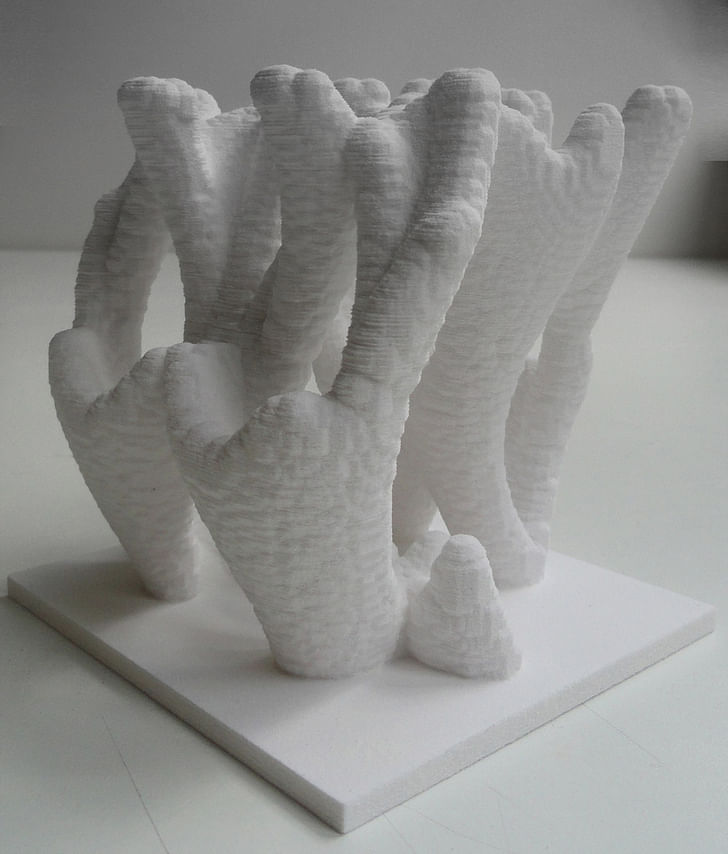



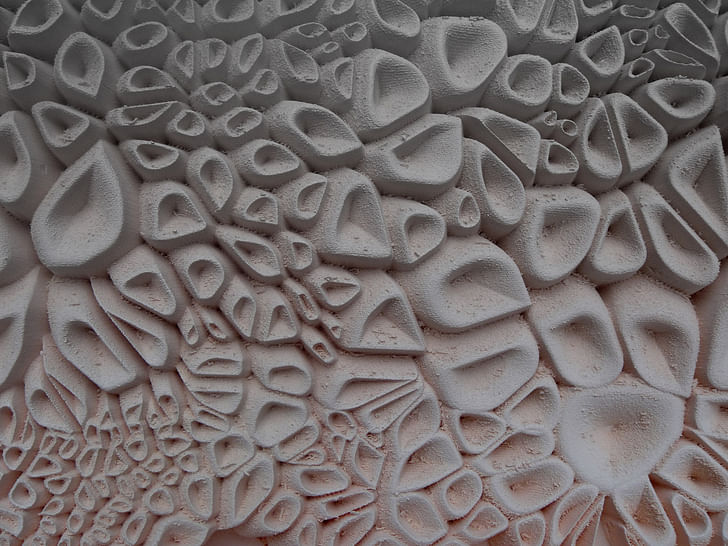

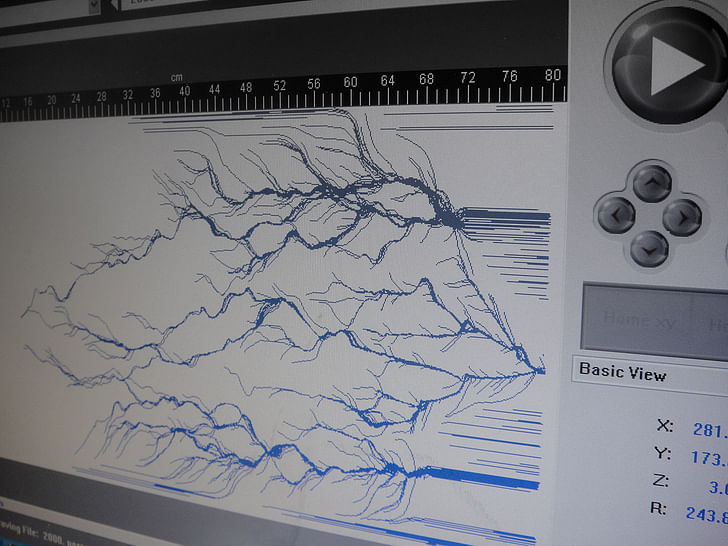

During the workshop, the biggest challenge was to be able to coordinate the time for the design and production of student work together with the fabrication and assembly of the installation, the Fallen Star. As each design team had the task of proposing an architectural installation in DLAB Phase01, which lasted for one week, meeting this challenge in the given time span was both inspiring and required careful planning. In a similar manner, DLAB Phase02, which took place during the second week of the workshop, presented the goal of fabricating / installing the Fallen Star and integrating the student work across all teams within the installation.
During DLAB, both the tutoring team and the design teams faced the challenge of short-timed project proposal using computational tools as well as with the use of digital fabrication machines in a fully contextualized architectural problematic. During the intense short Visiting Schools, the participants were exposed to a systematic and carefully designed formula that included software tutorials, tool kits, and lectures from internationally known professionals as well as hands-on experience with fabrication / assembly processes in small and large architectural scales. Overall, the learning experience was as strong to the participants as it was to the tutors. To be productive, credible and capable to complete a project was a responsibility shared by students and tutors.
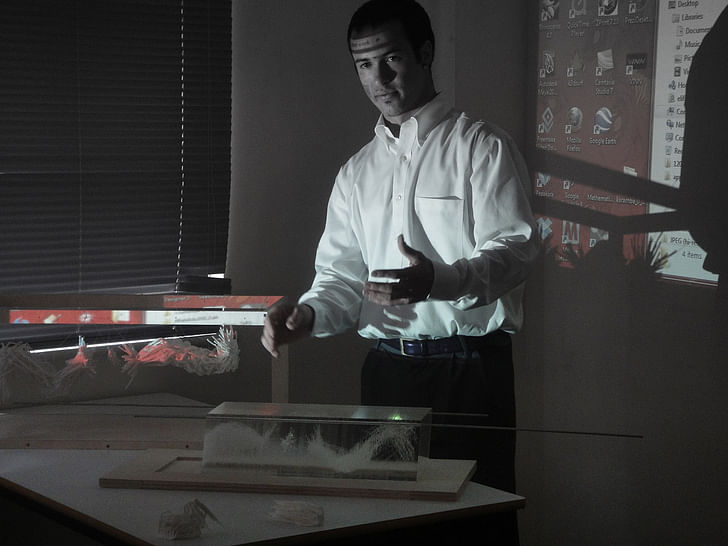
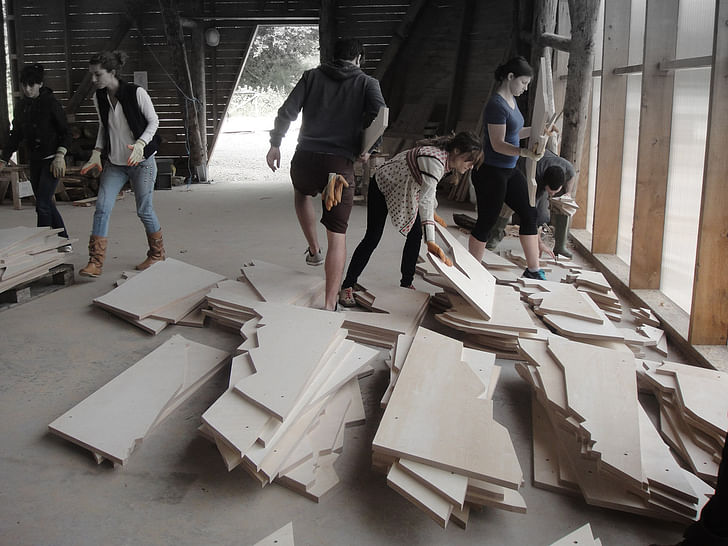

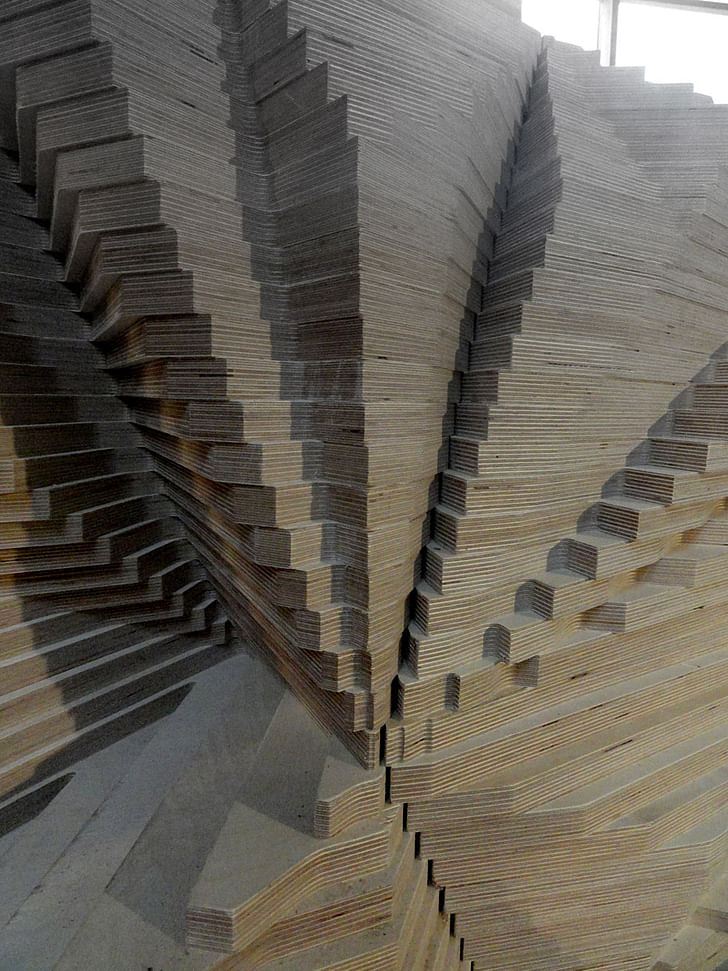

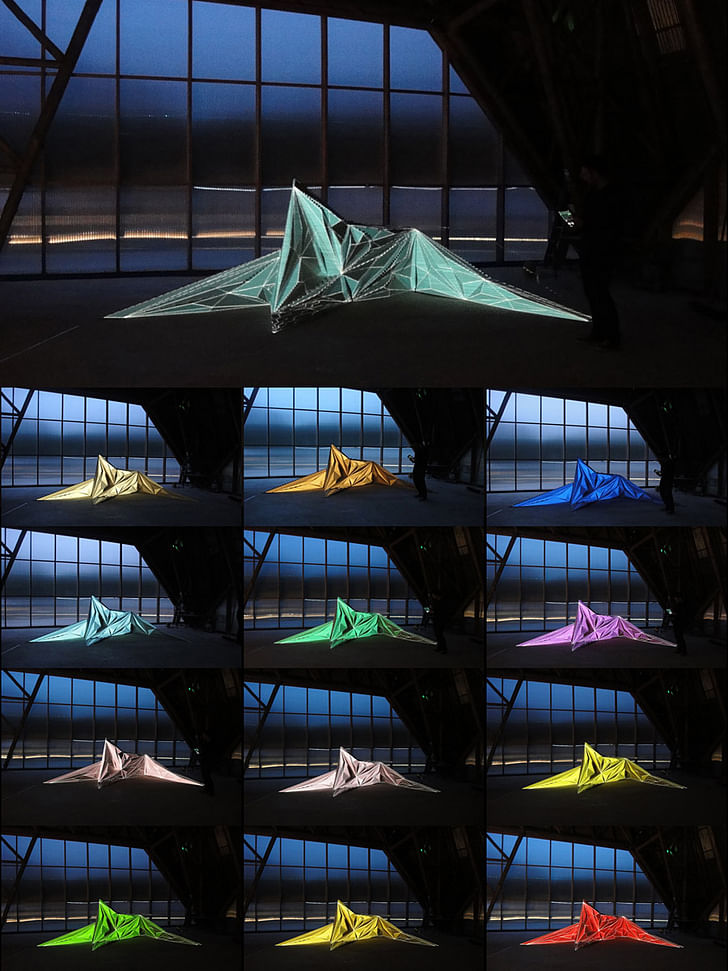
Credits:
AA DLAB Program Director: Elif Erdine
AA DLAB 2012 Tutors: Elif Erdine, Alexandros Kallegias, Daghan Cam
AA DLAB 2012 Students: Tarik Alboustani, Maria Brewster, Lyzette Zeno Cortes, Hugo Garcia, Hannah Hobbs, Sylvia Leon, Andrew Liu, Alessio Lombardi, Cristina Nan, William Nemitoff, Antonio Rovira, Eric Williams
Elif Erdine is a PhD in Architectural Design Candidate at the AA, researching on ‘Generative Processes in Tower Design: Algorithms for the Integration of Tower Subsystems’, under the advisory of George Jeronimidis, Patrik Schumacher, and Mike Weinstock. She has been working at Zaha ...
5 Comments
I am always amazed at the resources available to students at some schools. And then to see those resources actually being put to good use.
a cnc cut voronoi system, really?
If you're referring to my comment, then yes, really.
I'm not amazed by the machine itself, but that it is readily available to students.
Not to mention whatever gallery space they have their final piece presented in.
I'm spoiled, at BSU we have two CNC mills, two giant woodshops, multiple 3d printers and lazer cutters... visited other schools and almost went into withdrawal from not having the 'amenities' i was used to.
Block this user
Are you sure you want to block this user and hide all related comments throughout the site?
Archinect
This is your first comment on Archinect. Your comment will be visible once approved.